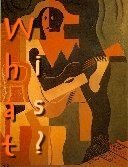| News Guides Performances What Is Music? | ELLOPOS | ||||
|
MARIA G. AMILBURU Kierkegaard's aesthetic
realm of existence |
|||||
| From: Maria G. Amilburu, Understanding Human Nature: Examples from Philosophy and the Arts, http://www.bu.edu/wcp/MainAnth.htm | |||||
The question of human existence is the focal point of all Kierkegaard's thought. For Kierkegaard, existing meant becoming more and more individual, but this is not given to all human beings in the same measure, because we may be living in an inauthentic way. The fact that someone belongs to the species homo sapiens does not guarantee that that person leads a human existence. In fact, Kierkegaard seems to think that few people — or at least, a minority of people — genuinely live as human beings. So, what does Kierkegaard mean by living in a fully human way? In his view, existence is above all something that has to be shaped. People must make themselves if they want to be themselves. "A man cannot evade this self-realisation; that would be as impossible as evading one's very self — wich is really the same thing, as the self is the same as self-realisation". (1) The self cannot be itself unless it is creating itself. So, the fact that people have to form themselves means that human existence is a task. (2) Kierkegaard writes of three basic stages in this process of self-realisation: the aesthetic stage, the ethical stage and the religious stage. (3) All human beings are currently at one of this stages, depending on the extent to which they have achieved their life-project. Each stage is a way of seeing life, a way of understanding the world. They are different ways of living out one's existence, independent spheres of life, situations which embody a certain stability. Living fully in the aesthetic sphere will never lead to the ethical one, and the upholding of ethics will never open the door to religion. The stages of existence relate to each other like the rungs of a ladder leading to a more perfect existence: and it is impossible to move from one to another without a leap. The transition from one stage to the next means that one has to break with the lower one, and this is an all-or-nothing decision, which is not a natural follow-on from the preceding stage, but a complete negation of it. Notes (1) KIERKEGAARD, S., La maladie a la mort, in Oeuvres Complčtes, Editions de L'Orante, Paris, 1984, vol. 16, p. 175. (2) I have discussed at lenght the subject of the self-constitution of human existence in my work El yo como síntesis segun Kierkegaard, University of Navarra, 1988, to which I refer those interested in pursuing this question further. |
|||||
|
|
|||||

